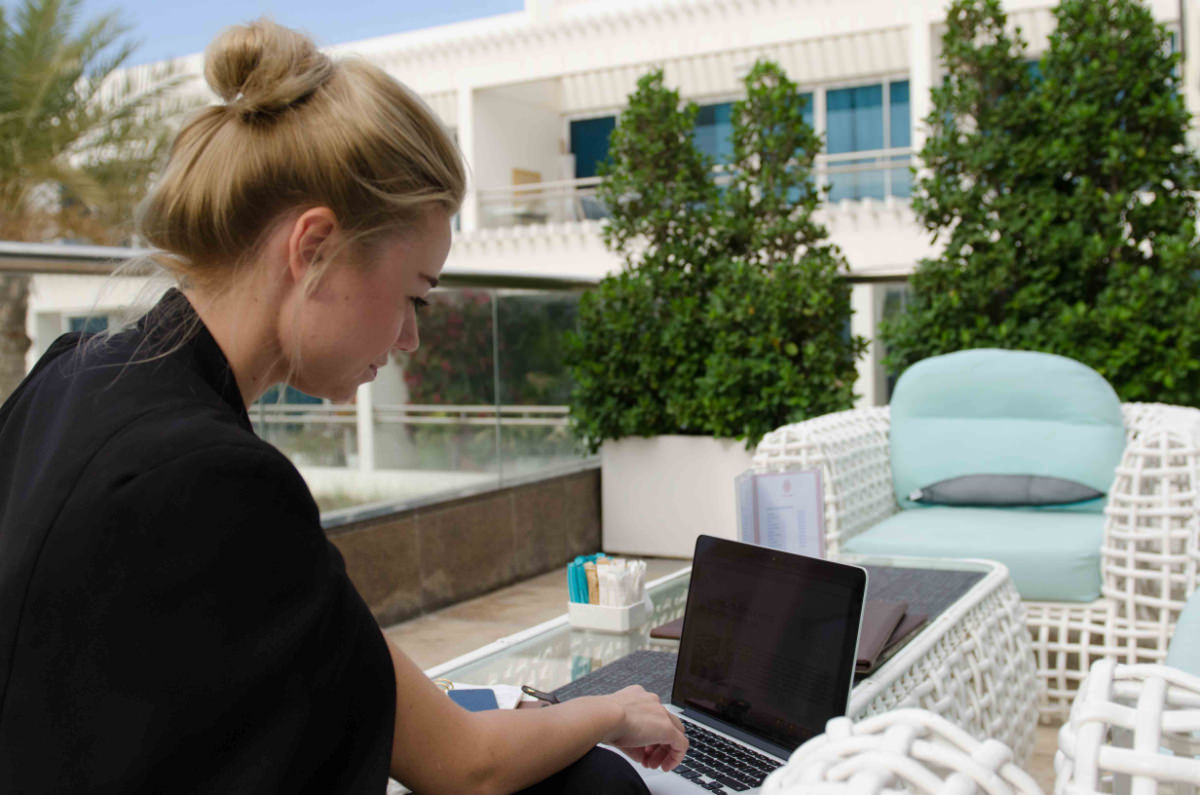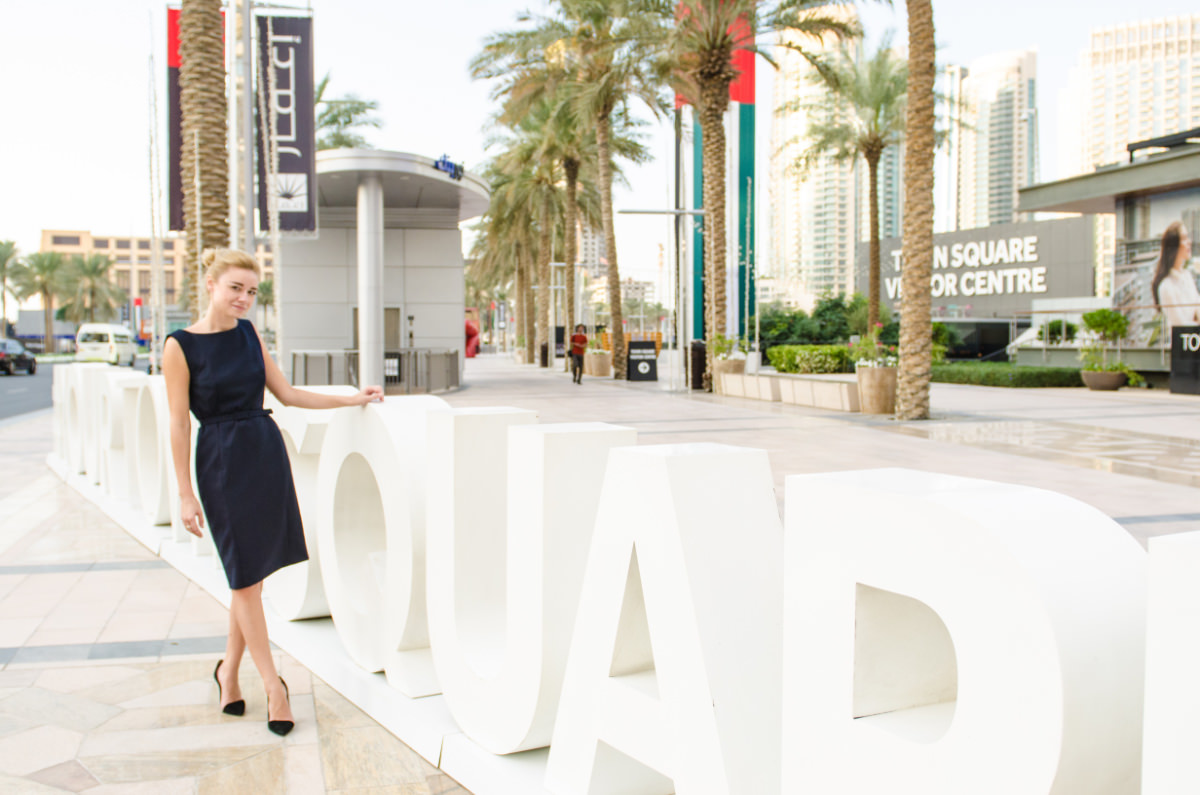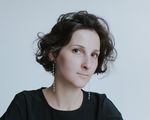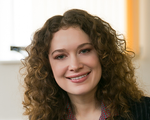About Success Builder
How do you find your place in life? How do you find something to do that both comes naturally to you and makes you happy? The answer is that you have to apply the knowledge you’ve gained from university and from life itself correctly. The Success Builder Project features HSE University graduates who have discovered themselves through an interesting business or an unexpected profession. The protagonists share their experiences and lessons learnt and talk about how they’ve made the most of the opportunities they were given.
Working with fine art is not only about well-known artists and beautiful paintings; it also requires precise calculation, analysis, management, and even psychology. Art can be a business, and an entirely interesting business at that. HSE alumna Ekaterina Plastinina, who founded and co-owns the art agency Alma Arts, sat down with Success Builder to discuss how to become a connoisseur of the auction business, how to successfully purchase a painting, and why Dubai is better than London.
Why did you go to Sotheby’s Institute of Art in London? After all, the master’s programme at HSE was jointly developed with Sotheby’s.
When I graduated from HSE, the university was only just launching the master’s programme with Sotheby’s. Plus I had been planning to move to London for a long time, so I decided not to change my plans. For me, moving was the right thing to do – professional growth, job prospects, language mastery, a new atmosphere… Also, London is truly the heart of the art market.
What made you decide to study art after graduating from the Faculty of Management?
I’ve always been really interested in art. When I was a student at HSE, I did an internship in the PR division of the Pushkin Museum, and after moving I got some professional experience at a few galleries in London. I have always wanted to combine my management experience with art – that is, to apply my professional knowledge to something that has always captivated and inspired me.
What’s it like studying at Sotheby’s compared to HSE?
Studying at HSE is structurally different than at other Russian universities, and the teaching style is more similar to that of the West, so when I started studying in my master’s programme at Sotheby’s, it was easy for me to become acclimated to the academic process, which might not be the case for other students from Russia. As concerns English, HSE has a strong language programme, so passing the IELTS wasn’t a problem for me.
~£3million
is how much Ilya Kabakov’s painting The Bug sold for in London in 2008, making Kabakov’s work the most expensive of any Russian artist alive today
Studying at Sotheby’s is different in that academics are really aimed at self-development. More time is devoted specifically to self-education. Students spend their time at the library and conduct their own research, while teachers are viewed more as mentors. There are no homework assignments that have to be checked and turned in by a certain deadline. We were given essays, but instructors were mostly looking at our ability to analyse the art world, particularly the art business. As students of the Art Business programme, we visited tons of galleries and went to art exhibitions all over Europe. We were also given the opportunity to attend a lot of interviews and lectures by professionals in the art business.
What particular professional skills did you acquire there?
The main bonus of studying at Sotheby's – like at HSE – is the other students you meet. The people who surround you as a student become incredibly important down the road. A lot of my friends from the institute have also become my business colleagues, and not just graduates of the institute in London, but from departments in other cities as well, New York being one example. As a student, you build a unique network of contacts that you can’t build anywhere else. The art world is very small, especially in London, which is why the people who stay in the art world work side by side and carry out a lot of their projects together.
What’s the art market like? And what kind of business does it facilitate?
It mostly concerns selling art through galleries, auctions, exhibitions, and art fairs, the last of which is generating more and more turnover. Whereas before, London would host three or so art fairs a year, now the number has grown to between seven and 10.
The colossal turnover the art market generates largely depends on the private sales of dealers, as well as galleries and auction houses.

Is there a difference between your business and that of art dealers?
An art dealer is a person who buys and resells works of art. We are consultants. We have agreements with the artists who are represented in our catalogue. We represent them and sell their work, but not only privately. We act more as agents and consultants on contemporary art, also providing services on the placement of art pieces. Plus we create modern interiors all around the world. We are currently finishing up the interior of a restaurant in Dubai, for instance.
Looking at the Russian art market with western eyes, how does the Russian market differ from the London market, for example?
In the West, art is bought more willingly than in Russia, so to speak. In Europe, for example, art is traditionally perceived as a long-term investment; after all, its value grows over the years. Also though, several collectors have had quite unsuccessful experiences investing in art, and this happens quite regularly. As concerns Russia, there are simply no stable opportunities to invest in art.
How do you check the authenticity of a work of art?
London and New York have special foundations and associations that are able to confirm the authenticity of a work of art. One example is the Andy Warhol Foundation.
The history of a work of art is also very important. In English this is called provenance. There’s currently a problem surrounding art that was confiscated by the Nazis. During the war, these works were not only taken from Jewish families, but from Jewish collectors as well. Before, if these paintings ended up at an auction, the price couldn’t increase very much. And the opposite could occur; if a painting had a perfect reputation, was exhibited frequently, and belonged to well-respected collectors, the ultimate price could exceed the auction house’s expectations. Currently, art that was stolen during the war is gradually starting to be sold without any look at the past. This is due to changes in collectors’ relationships.
The more time you spend reflecting on something, the less likely it is it will work out
But if there are any gaps in a painting’s chronology, it’s dangerous to take it to an auction because you could lose a lot of money. An auction opens up information about a work of art to the entire world, and any name that was associated with a painting can demand restitution at any point in time. Such cases have come up, and I’m sure we’ll experience them in the future.
Even though someone, say, put down several thousand pounds for it at an auction?
Right. There was an instance involving the Chinese government, when a collection of Chinese art was put up for auction in London. China declared it had a right to these works because they were stolen and were considered national heritage. After the scandal, the works were returned to China.
How is the internet of the 21st century affecting the work of art institutions?
The art business is gradually adapting to the internet. The auction house Sotheby’s, for example, broadcasts auctions on its website now, and you can bid online during the auction. At the university, we watched auctions right on the website, and this is how we studied the auction business and the public’s reaction. I would thoroughly analyse the results of the auctions and write material for a Russian-language newspaper in London. I also wrote articles about exhibitions and auctions for the website Russian Gap, which allowed me to get a taste of journalism.

In the business I’m in, it’s really important to know about trends and keep your eye on the sales that take place at several auctions so you can analyse the results. Something unbelievable might happen, and thanks to an unexpected trend, the price could rise to several times the appraised value.
I’ve always wanted to know what role the guy with the gavel plays during an art auction. Is he just a showman or does he really have an impact on the process?
An auction is a performance of sorts with its own characters and conflicts. Everything depends on the person carrying out the auction – they might engage the public by putting on a real show, or they might just go through the lots without really leaving people with a memorable evening. First and foremost, the auctioneer has to be an active leader and involve the public to make sure a certain spirit is created in the room. A good auctioneer is able to recognize practically everyone at the auction, having known them for a long time or simply having seen them at the preliminary showing of the paintings, which the auction house carries out a week before the event. The psychology of it all is very important when selling artwork.
What role does a psychological approach play when interacting with a client?
It’s good to be tactful and sincere since you’re talking with people directly. And if you yourself aren’t interested in the sale of a painting, it’s better to not take on the endeavour. A lot depends on the art dealer or consultant, but as for me, I can say that when I buy a painting, even though I’m a beginning collector, I only listen to myself. My main motivation is my own personal preference.
~$380 bln
is the annual turnover of the art market. The Russian market is estimated at $1.5 billion
What about taking a subjective approach towards modern art? I’d think that it’s totally impossible to look at it objectively.
As for one’s personal perception, yes. But a sale also depends on whether a person is buying a painting as an investment or simply because they like it personally. If a consultant says that it’s an excellent investment for the coming 10 years, then a business-minded person might acquire the painting for the sole purpose of investing, i.e., there will be no emotion involved.
What’s more important in your business, really understanding art or being a good manager?
Management is the basis of any business, which is why HSE was a good platform for me as concerns organizing my own business. The school taught me to manage my time and my own effectiveness.
In our field, a knowledge of art plays a key role, but my business partner and I don’t only use this art knowledge in our projects; it also make it easier to work in architecture, interior design, sales, marketing, and PR.
How did you ultimately decide to start your business? After all, it comes with certain risks and investments.
There’s a saying I really like – ‘risk it all once and you might end up being happy for the rest of your life.’ I believe that the more time you spend reflecting on something, the less likely it is it will work out. That’s why as soon as my partner and I got the idea for our joint business, we decided to carry it out right here. The basis of any business is confidence and a clear understanding of what you do. From the very get-go, we knew what we wanted to do and how we wanted to represent our artists. Throughout the entire process, we dealt with all difficulties and issues right as they would arise. The main thing is not putting anything off for later. Before that, I had other projects in the works, and the only thing I can say as far as advice is concerned is to never put anything off. Do it, take risks, and bring your ideas to life. All ideas are meaningless until you bring them to life.
How do you like Dubai? What is it about Dubai that makes you prefer it to London?
I’ve always been drawn to new markets, and there are a lot of professional opportunities here. To make it in the art business in London, you have to spend many years working without a whole lot of profit. The reason for this is the level of competition and a general inability to bring something new to the industry. After all, all of the best art businesses in the world are based in London. But when I travelled to Dubai for a few exhibitions, I understood that there is a niche here offering a host of art and design opportunities. This is why I decided that Dubai would be a platform for me to uncover new ideas. There are a lot of people here who are open to art. The Dubai Design District just opened, for example, so there’s an entire region for galleries, design studios, and new fashion brands. Alserkal Avenue, the largest platform for contemporary art in Dubai, has also opened up new pavilions. A real art boom is currently underway here, and I want to be at the very heart of it. But the local art market also has certain boundaries you have to factor in. There are, for example, a number of things we don’t sell: nudes, works that might offend local traditions, or artwork with any religious theme.

In what way do you work with artists?
I initially had a circle of artists that I potentially wanted to represent as their contemporary art and design consultant. For me, this circle started coming together back when I was a student in London, and the majority of the artists we represent come directly from my Sotheby’s connections. It’s important not only to sell budding talent, but to develop it as a creative identity as well, thereby making people want to see the work and buy it now and in the future. You need a certain PR approach here. Of course, artists can take the social networking route, but you have to be unbelievably lucky when it comes to selling your work this way. Selling art is a business, and we prefer to leave the creative side to our artists while we take on the marketing aspects.
Do you hope to strengthen your ties with your alma mater?
We are actually in talks with the HSE Alumni Association on a joint project. We’d like to get involved with the joint master’s programme between Sotheby’s and HSE and share our experience. HSE is really dear to me, and I’m always happy to take part in university life and in any special projects that give alumni the chance to interact with current students.
We’ve already proposed becoming HSE’s representative in the United Arab Emirates, which is of course a huge honour for me.













































































































































